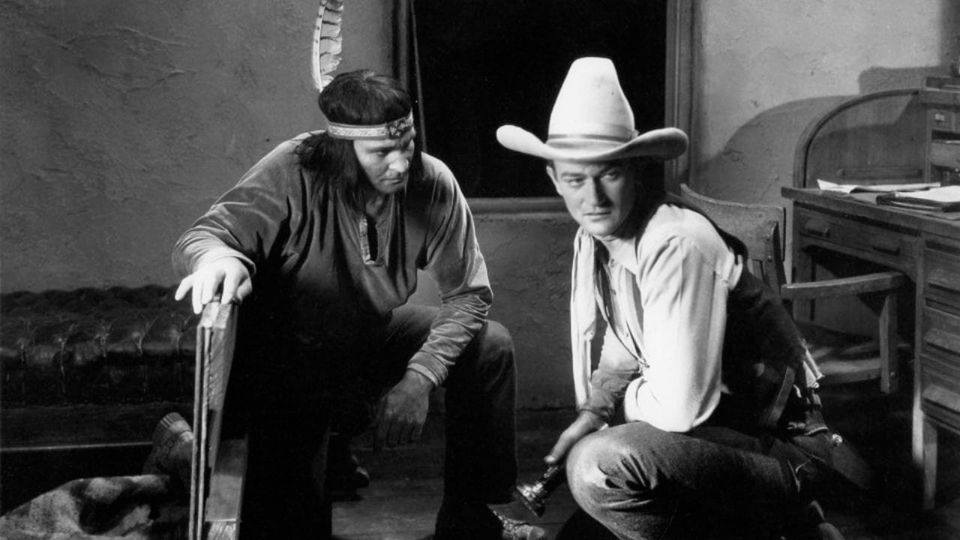The Star Packer

John Wayne plays a U.S. Marshall who, along with his Indian partner Yak, played by Yakima Canutt, matches wits with the villainous Shadow, an unseen outlaw terrorizing a small western town.
After the local sheriff drops dead of a mysterious gunshot, Wayne assumes the mantle of the titular star packer. Gabby Hayes plays a local ranch owner whose niece, Anita, makes a surprise arrival.
Anita has inherited a large stake in the ranch. Hayes confesses the Shadow’s gang has stolen the cattle and scared off the help. Ashamed, he offers to buy her out. That night, the Shadow’s men try to scare Anita with Scooby-Doo style ghost antics, but in a refreshing twist, she doesn’t panic, and instead picks up her pistol, draws a bead and drills the “ghost”.
Meanwhile, Wayne and Yak discover a secret passage and trick stump that explains how the prior sheriff’s shooter remained unseen. They also suss out the Shadow’s identity. Given the limited cast, I suspect you can guess the culprit.
This was one of sixteen Lone Star westerns Wayne made for Monogram. These sixty-minute features shot back-to-back, each taking six days max. Said Wayne:
Come hail, rain, sun, hell, or high water, you had to make those films in six days. If the wind blew, the microphone picked it up and nobody could hear the dialogue, so if any talking had to be done, it was usually done indoors. Out of doors, dialogue was kept to a bare minimum.1
The Star Packer’s opening testifies to these constraints. The wind dominates the soundtrack, muffling Wayne and Canutt’s dialogue.
This may be a good thing. Canutt proves an actor of limited range, and his pigeon-English Indian performance aims for Tonto but lands closer to caricature.
The short productions beget much reuse. The films recycle locations, sets, and cast. But unlike Wayne’s prior oaters at Warner Bros., which recycled action footage from Ken Maynard silents, these featured all original stunt work, much of it courtesy of Canutt who served as Wayne’s stunt double and stunt coordinator besides his acting chores.
These stunts prove the major differentiators between the films. The Star Packer climaxes with the Shadow riding on the town with his men and a wagon bearing a machine gun. Wayne rallies the town to intercept. A large action sequence follows featuring galloping horses, gunfire, and a racing wagon.
Like all of Wayne’s Monogram releases, The Star Packer suffers from stilted dialog, wooden performances, and rushed production. These aren’t good films, but important ones. Their limitations, combined with their relentless production schedules and Wayne’s professional insecurity2, pushed Wayne to improve. Watching them is watching John Wayne as a work-in-progress.
- Munn, Michael. John Wayne (Penguin Publishing Group, 2001), 40.↩
- Said screenwriter Lindsley Parsons of Wayne in those days, “We’d be out on location, he’d do a dialogue sequence and he’d just cuss himself out terribly. He’d go off behind a rock and talk about how lousy he was.” Eyman, Scott. John Wayne: The Life and Legend (Simon & Schuster, 2014), 75.↩
Viewing History
The Watch TCM print lacks the synthesized score dubbed onto most distributions.